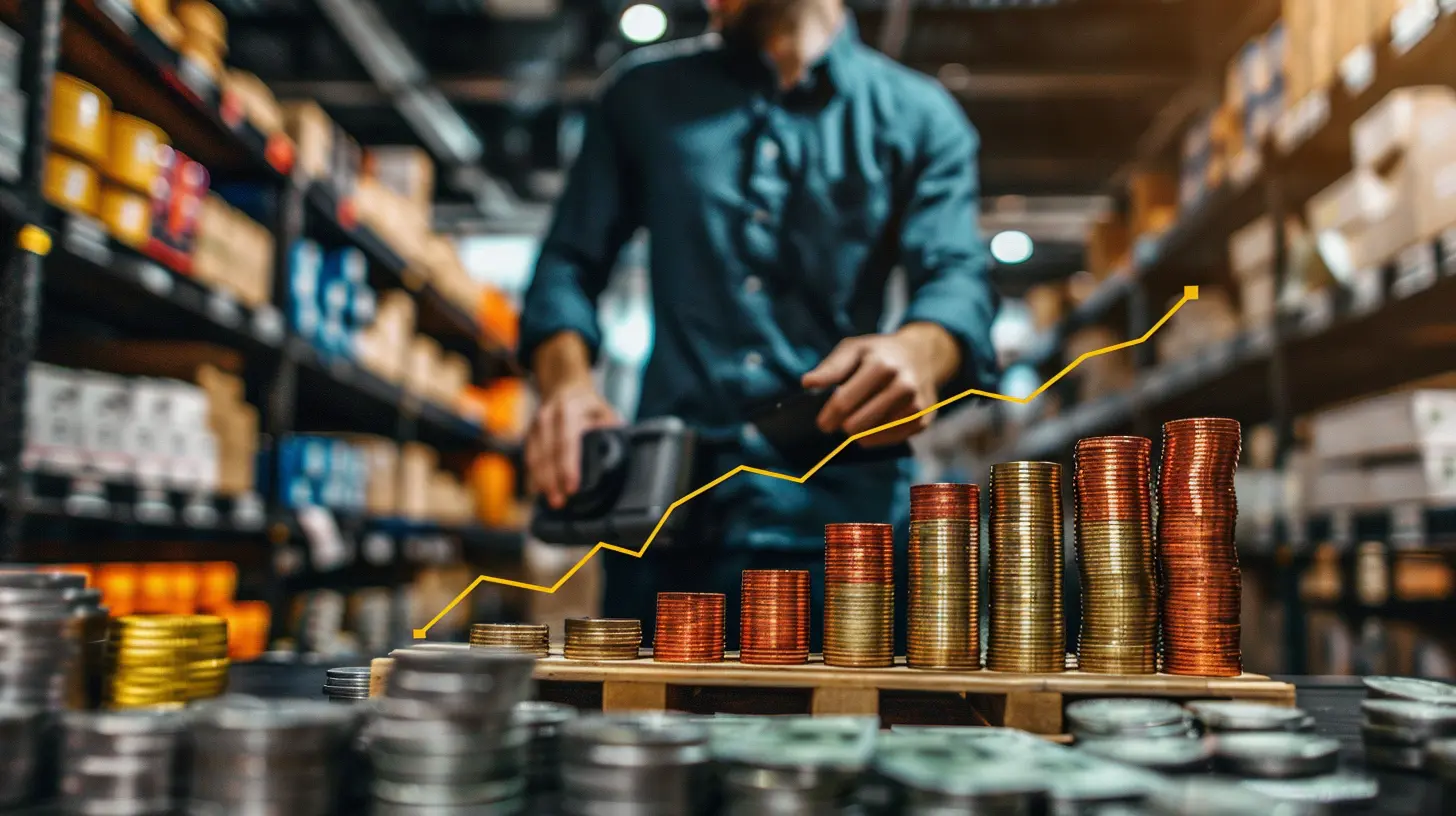Market Impacts of Supply Chain Disruptions: What You Need to Know
9 June 2025
Let’s face it—nobody was really talking about supply chains until they broke. Suddenly, everyday folks were learning phrases like “just-in-time inventory” and “port congestion.” But for investors and anyone with money in the market, supply chain disruptions are more than just late Amazon packages or empty shelves at Target. They’re a big deal—and they ripple through the economy like a dropped bowling ball in a kiddie pool.
So, what exactly happens when the cogs in the global supply machine grind to a halt? Well, buckle up. We’re diving deep into the wild world of supply chain chaos and how it throws markets for a loop.
What is a Supply Chain Disruption, Anyway?
Before we break down the impact on markets, let’s make sure we’re on the same page. A supply chain disruption occurs when a part of the supply process—getting raw materials, producing goods, transporting products, you name it—gets blocked, delayed, or completely shut down.Think of a supply chain like an assembly line stretched around the globe. When one part jams up, the whole thing slows or stops. And when you're talking about trillions of dollars in global trade, even a tiny hiccup can cause major financial indigestion.
The Domino Effect: How Disruptions Spread
Ever seen dominoes fall? One piece topples the next, and before you know it, the whole row is down. Supply chain issues work the same way. A flood in Southeast Asia that halts electronic chip production doesn’t just affect local factories—it can delay your car purchase in the U.S. or Europe for months.When one link in the chain breaks, costs go up, uncertainty spreads, delivery times stretch—and the market reacts. This domino effect can lead to inflation, lower corporate profits, wavering investor confidence, and even stock market volatility.
Key Market Sectors Affected by Supply Chain Disruptions
Some industries feel the pain of supply chain problems more than others. Let’s look at a few sectors that typically take the hardest hits:1. Automotive
Cars are essentially made of thousands of parts sourced globally. One missing component—say, a semiconductor chip—and production lines stop cold. Ever wonder why used car prices skyrocketed in 2021? That’s your answer.2. Technology
Laptops, smartphones, video game consoles—all of these depend on international components. Supply interruptions can delay launches, increase prices, and throw off sales forecasts. This spooks tech investors and can slam tech-heavy indexes like the NASDAQ.3. Retail
Remember when toilet paper and hand sanitizer were gold in 2020? Retail depends on a smooth supply process. Disruption means inventory shortages, less revenue, and unhappy customers—and shareholders notice.4. Consumer Packaged Goods (CPG)
From cereal to shampoo, CPG brands rely on consistency. Throw in a shortage of materials or packaging, and it messes with everything from production to delivery, tarnishing quarterly earnings for major companies.
Inflation: The Market’s Worst Nightmare
Here’s where things get spicy. When supply chains break down, goods become scarcer. And when stuff is scarce? Prices go up. That’s inflation, folks—and markets hate it.Why? Because inflation leads central banks, like the Federal Reserve, to hike interest rates in an effort to cool spending. And guess what higher rates do? They make borrowing costlier for businesses and consumers, which can strangle profits and slash consumer spending. Cue the stock market tantrums.
Corporate Earnings and Valuations Take a Hit
When companies can’t get the parts or materials they need, production slows. That means fewer products sold, which translates to lower revenues and—yep—disappointing earnings reports.Wall Street doesn’t like surprises. Missed estimates and profit warnings cause stock prices to tumble. Public companies in manufacturing, e-commerce, and logistics have seen wild swings in their stock values all because of supply chain delays.
And it’s not just about numbers. Investor sentiment—the mood of the market—matters. When confidence drops, so do investments and valuations.
Supply Chain Disruptions and Stock Market Volatility
Let’s talk turbulence. Supply chain issues infuse uncertainty into the market. And markets hate surprises.Say a major port in China shuts down due to a COVID outbreak. Suddenly, investor confidence craters across sectors. Analysts issue gloomy forecasts, and the VIX—commonly known as the “fear index”—shoots up. Traders scramble, stocks dip, and boom—you’ve got a recipe for volatility.
This isn’t just theoretical. Between 2020 and 2022, markets swung wildly in response to news of shipping delays, container shortages, and factory closures.
Investors React by Reshuffling Portfolios
When supply chain disruptions become front-page news, savvy investors start making moves. What kind?- Shift to Domestic Producers: Companies that manufacture locally or nearshore can be more resilient in global hiccups.
- Invest in Logistics and Infrastructure: Firms like FedEx, UPS, and rail companies often see a bump when demand spikes for reliable transportation.
- Rotation into Defensive Stocks: Investors might ditch growth stocks and tech for more stable sectors like utilities or consumer staples.
- Hunt for Opportunities in Raw Materials: Disruptions make commodities like oil, copper, and lumber more valuable, turning these into hot investment spots.
Government Intervention and Policy Changes
When the market shakes, expect politicians to reach for the Band-Aids. Governments often respond to supply chain disruptions with:- Subsidies or incentives to reshore manufacturing
- Strategic stockpiling of critical resources (like medical supplies or semiconductors)
- New regulations or tariffs to protect homegrown industries
These policy shifts can have a long-term impact on which companies thrive—and which ones falter. And again, markets respond.
The Globalization Question
One of the biggest outcomes from recent disruptions? Rethinking globalization.For decades, businesses chased efficiency and low costs by spreading their operations around the globe. But now, the narrative is shifting to resilience and reliability. Enter terms like “nearshoring” and “friend-shoring.”
This pivot can shake up international trade dynamics and impact emerging markets that relied heavily on manufacturing exports. Investors are closely watching how this trend evolves. A seismic shift in how companies source goods could reshape market performance across the globe.
How You Can Prepare as an Investor
If you’re a retail investor—aka someone with a brokerage account or a 401(k)—you can’t exactly fix the global supply chain. But you can take steps to protect (and potentially grow) your money.Here’s how:
1. Diversify Your Portfolio
Don’t bet everything on one sector that’s vulnerable to disruptions. Diversify across industries, geographies, and asset types.2. Watch Company Supply Chains
If you read earnings reports, pay attention to where businesses source their materials and how they manage logistics. Companies with strong supply chain resilience are likely to perform better in turbulent times.3. Keep an Eye on Inflation Trends
Supply chain problems and inflation go hand-in-hand. Watching inflation data can give you clues about how central banks might move—and how that could affect your investments.4. Stay Calm During Volatility
Panic selling when the market dips only locks in losses. Sometimes, sitting tight and playing the long game is your best move.The Future Isn’t All Doom and Gloom
Here’s the silver lining: supply chain challenges have spurred innovation.Companies are investing in:
- Advanced logistics tech like AI-powered inventory management
- Robotics to reduce reliance on labor
- Digital twins to simulate supply chain scenarios and stress tests
- Decentralized sourcing to minimize single points of failure
Long-term? These changes could create stronger, more dynamic businesses—and more opportunities for smart investors to benefit.
Final Thoughts
Supply chain disruptions are like hidden earthquakes that shake up the financial markets. They influence everything from product availability to inflation, corporate profits, and the stock market itself. Whether the cause is a pandemic, a war, or a labor strike, these shocks send ripples through the global economy—and your portfolio isn't immune.But understanding how these disruptions work gives you a leg up. It helps you see the patterns, anticipate risks, and stay focused when markets get jittery.
So next time you hear about a port closure or factory delay on the news, don’t just think about late deliveries. Think about how that tiny ripple might grow into a wave—and ask yourself: am I ready?
all images in this post were generated using AI tools
Category:
Market TrendsAuthor:

Knight Barrett
Discussion
rate this article
2 comments
Uzi McLean
Supply chain disruptions? It's like trying to get a pizza delivered during a snowstorm—everyone's hungry, but good luck getting the toppings on time! Just remember, impatience won't help the market, but maybe a slice of patience will!
June 12, 2025 at 4:48 AM

Knight Barrett
Great analogy! Patience is indeed key during these disruptions. Thanks for sharing your thoughts!
Kinsley Abbott
Supply chain disruptions: the only time your coffee mug's journey to your desk feels like a stock market crash!
June 9, 2025 at 2:44 AM

Knight Barrett
Indeed, the complexities of supply chains can make even the simplest items feel like high-stakes investments!


